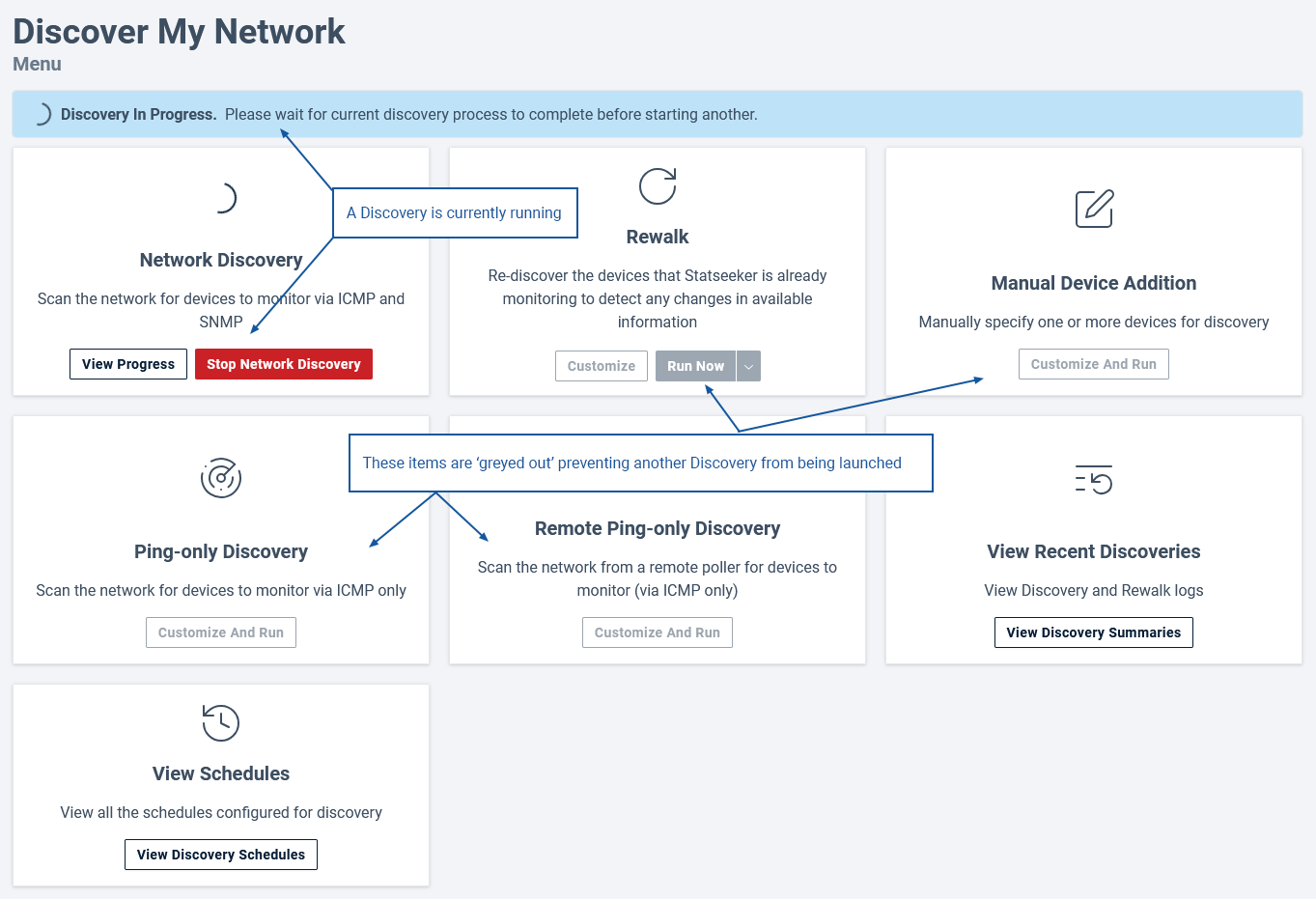Index
- Overview
- Discovery Types
- Monitoring the Discovery Process
- Completed Discovery Summaries and Logs
- Device Naming
- Report and Dashboard Data from Newly Discovered Devices
Overview
Discovery refers to the process Statseeker uses to locate devices on your network, and depending on the type of Discovery being run:
- Test communications between Statseeker and the device for future data collection
- Collect configuration information from those devices, building an inventory of monitored hardware
Statseeker also employs a variation of the Discovery process called a Rewalk. A Rewalk does not discover any new devices, rather it targets known devices. The Rewalk queries known devices for configuration changes which may have occurred since the previous Discovery\Rewalk, updating the Statseeker configuration to match.
Statseeker has a default scheduled Rewalk which occurs at 11am server time:
- The Rewalk schedule can be modified to occur at a different time
- Additional Rewalks can be scheduled
- Discovery processes can also be scheduled
See Scheduling Rewalk and Discovery Processes for details.
Discovery Types
Statseeker offers several varieties of Discovery, to view these options:
- Select Administration > Network Discovery > Discover My Network

The various Discovery types offer a range of customization options which:
- Modify the scope of the Discovery, fine-tuning which devices will be targeted
- Modify which credentials are used when attempting to communicate with those devices
- Specify how Discovery handles known (previously discovered) and newly discovered devices
- Modify how Statseeker performs an 'SNMP walk' of the device (tuning the process for improved performance and assisting with devices that have difficulty communicating via SNMP)
- Modify the interface status and data monitoring options for newly discovered interfaces
- Specify which Auto-Grouping rules are run after Discovery completes
For details on configuring and launching each type of Discovery, see:
- Network Discovery - use select IP Address Range configurations (IPv4) or the Hosts file (IPv4/6) to locate devices for monitoring via both ICMP and SNMP
- Rewalk - A Rewalk does not discover any new devices, rather it identifies configuration changes on known devices, updating the Statseeker configuration to match
- Manual Device Addition - manually provide details of a single IPv4 device (or import a CSV detailing multiple devices) for monitoring via both ICMP and SNMP, or via ICMP only
- Ping-Only Discovery - use select IP Address Range configurations (IPv4) or the Hosts file (IPv4/6) to locate devices for monitoring via ICMP only
- Remote Ping-Only Discovery - use select IP Address Range configurations (IPv4) and nominate one or more Observability Appliances to monitor the devices via ICMP only
Monitoring the Discovery Process
Once Discovery has begun, the output summary will be displayed, updating as Discovery progresses. Details on each item can be viewed by clicking the associated help icon ( ).
).
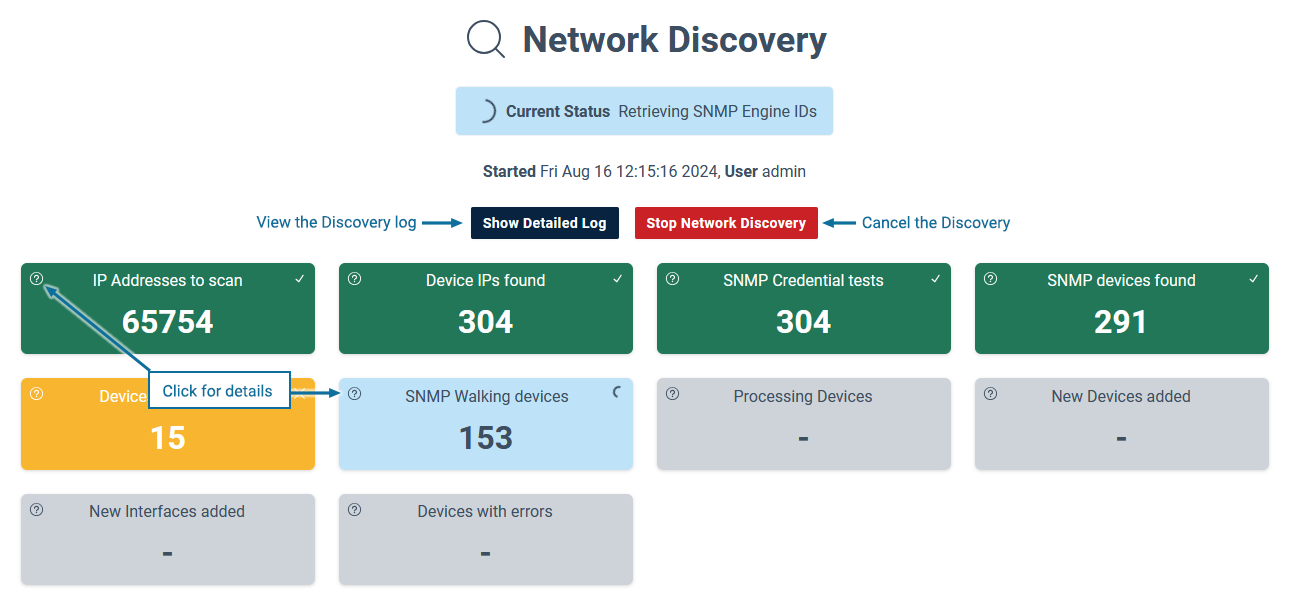
Only a single Discovery process can be running on the server at a time, but a running Discovery can be manually stopped as needed.
Completed Discovery Summaries and Logs
The Discovery output summary, log, and Discovery data are all available for download once complete.
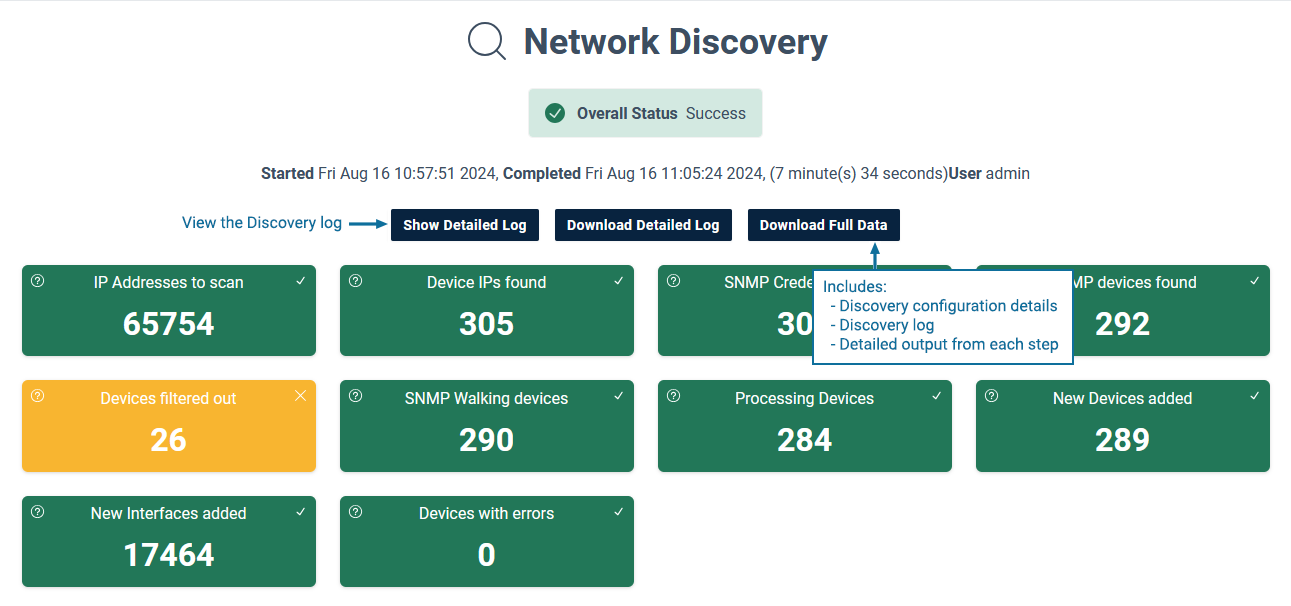
Discover History
Statseeker stores up to 100Mb of compressed discovery logs prior to rotating log files. This should account for over 4 months' worth of daily Rewalk logs for the largest of networks (over 500,000 monitored interfaces), and years' worth of logs for most servers.
To access the server's Discover history:
- Select Administration > Network Discovery > View Recent Discoveries
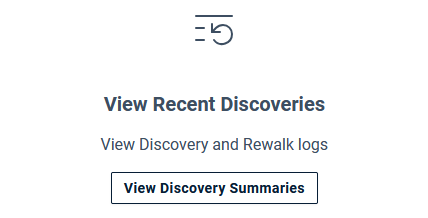
- Select View Summary for the relevant Discovery
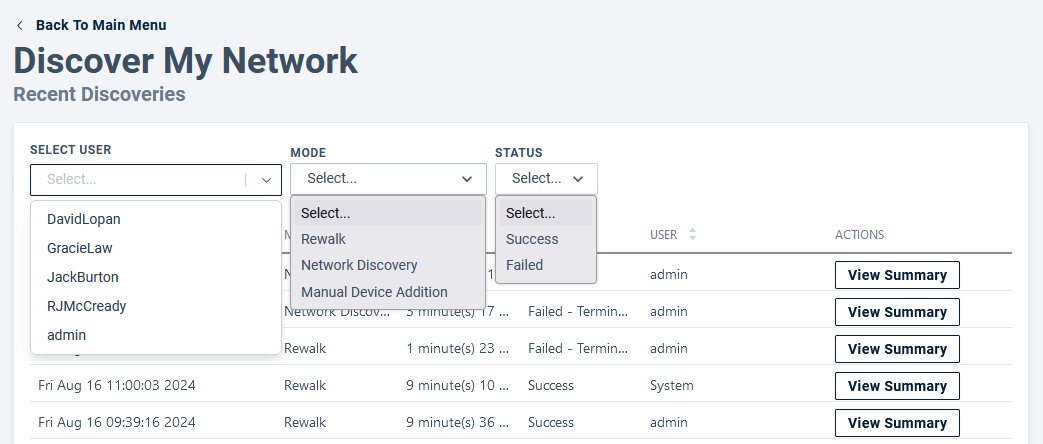
Device Naming
One of the steps in the Discovery process is assigning a name to the discovered device. When running a Discovery, devices are initially named according to SysName, or, when SysName is empty or unavailable, the IP address. At the end of discovery, Statseeker will rename devices according to a specified naming hierarchy referencing the SysName, IP Address, and Hosts File.
In addition, Statseeker users with the Is Admin permission have the ability to manually specify a device name, overriding any other assigned device name.
See Device Naming for details on modifying the automatic device naming scheme or manually specifying a device name.
Report and Dashboard Data from Newly Discovered Devices
Statseeker will continue to poll all known devices during Discovery and will begin polling newly discovered devices once Discovery is complete.
- The graphing of collected data requires that there be data from at least 2 reporting periods (i.e. If the data is being graphed at a 1-minute granularity, then you need at least 2 minutes of data before the graph can be displayed)
- Some stock reports default to a Last 5 Minutes reporting period, displaying a 5min average. These averages may be skewed by null values if the polled entity wasn't available for polling for the entirety of that 5 minute window.
Be aware of these delays when attempting to view data from newly discovered devices.

